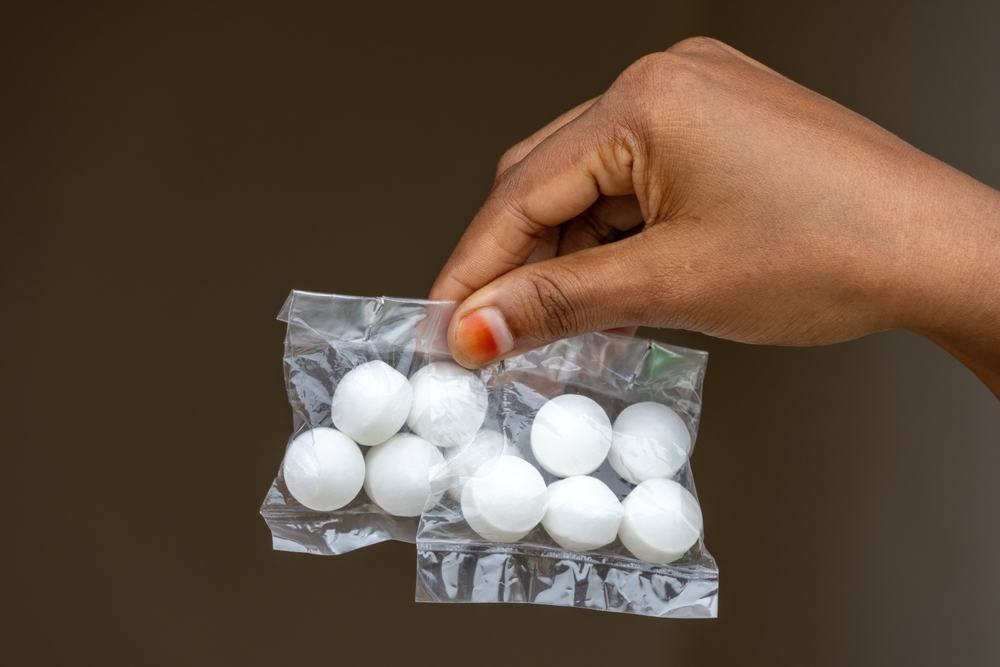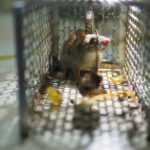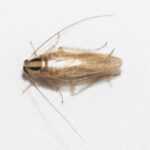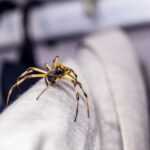Mothballs Guide: Effective Solutions for Pest Control and Storage
People commonly use mothballs to protect clothing and linens from moths and other pests. These small, white balls contain chemicals like naphthalene or paradichlorobenzene, which release vapors that repel or kill insects.
You should never use them in open areas; they work effectively and safely only when placed in closed, airtight containers to prevent harm and ensure proper pest control.
- These pest control balls provide effective pest control but contain toxic chemicals that pose health risks, including potential carcinogenic effects.
- You must store them in airtight containers and follow safety guidelines to prevent harmful exposure to humans and pets.
- Alternatives, such as cedar wood and freezing garments, offer eco-friendly pest control options without health hazards.
Introduction to Pest Control
Pest control plays an essential role in keeping your home clean and your belongings safe from damage. Many households use these balls to protect valuable clothing and other items from clothes moths and a variety of other insects. The Environmental Protection Agency (EPA) regulates the use of pesticides, including these products, to ensure people use them safely and effectively in the fight against pests.
When you use these pest control balls, follow the directions provided on the product label. Doing so helps prevent unnecessary exposure to toxic substances that can harm your health or the environment. Agencies such as the Louisiana Department of Agriculture and the Disease Registry offer valuable information and guidelines for the safe use of pesticides, including these pest deterrents, to help you make informed decisions.
These balls specifically kill clothes moths and their larvae, which cause significant damage to clothing and other stored items. By using them responsibly and according to agency recommendations, you can effectively protect your belongings from pests while maintaining a clean and healthy environment. For additional information on safe handling and use, organizations like the National Institute for Occupational Safety and Health (NIOSH) and the Disease Registry provide helpful resources.
By staying informed and following the recommended guidelines, you can use these products as an effective tool in your pest control strategy, ensuring your valuable clothing and household items remain protected.
What Are These Pest Control Balls?
These balls are small, white, round, solid balls or tablets designed to protect clothing and linens from moths and other insects that cause significant damage. Typically, manufacturers include chemicals like naphthalene or paradichlorobenzene. These chemicals work by emitting vapors that either repel or kill moths and their larvae. The vapors disrupt the moths’ ability to reproduce and feed, effectively preventing them from damaging textiles and other things.
They serve as both a moth repellent and insecticide. Their vapors create an inhospitable environment for moths and their larvae, protecting your clothing and linens. Many households rely on these balls to safeguard their wardrobes effectively.
Their effectiveness depends on proper use and purpose. Correct usage maximizes benefits and minimizes potential risks.
Proper Usage
You achieve effective use by storing these balls in airtight containers. This containment ensures the toxic fumes do not escape into living spaces and keeps the vapors concentrated enough to repel or kill moths and other insects.
Always follow label instructions to avoid harmful exposure to humans and pets. Never store them near food or food preparation areas to prevent contamination. Keep them out of reach of pets and children to avoid accidental poisoning.
Do not use these pest control balls in your yard or other outdoor areas. Using them outdoors is illegal and can harm the environment, wildlife, and the health of neighbors.
Following these guidelines ensures effective protection for your clothing and linens without compromising household safety. However, you should be aware of the health risks associated with these products.
Health Risks Associated
Although these products effectively control moths and insects, they contain toxic substances that pose significant health risks. Active ingredients like naphthalene, camphor, and paradichlorobenzene act as powerful pesticides but can harm people if inhaled or ingested. Exposure to their fumes increases the risk for various health issues.
Scientists have classified naphthalene as a possible human carcinogen, indicating potential links to cancer. The fumes emitted can cause respiratory issues if people inhale them over a prolonged period. This happens because the balls transition from a solid to a gas, releasing toxic vapors that can damage human health.
Even ingesting a single ball can seriously threaten small children and requires immediate medical consultation. Symptoms of poisoning include nausea, vomiting, and dizziness. Handle with care and follow safety guidelines to minimize exposure.
Studies on rabbits and rats show that chemicals found in these products, such as naphthalene and 1,4-dichlorobenzene, cause cancer and other health problems, highlighting the potential risks to humans.
Legal Restrictions
The Environmental Protection Agency (EPA) regulates these pest control balls as pesticides in the United States, overseeing their safe and effective use. Using them contrary to label instructions violates the law and poses significant risks to humans, pets, and the environment.
Improperly imported balls may lack proper evaluation and labeling by the department, making them illegal. Purchase from reputable sources to ensure they meet regulatory standards.
Neighbors might notice and report illegal or unsafe use, helping protect the community from environmental hazards.
Using these balls outdoors contaminates the environment and poses risks to wildlife. Avoid using them near food due to contamination and health hazards. Adhering to legal restrictions proves crucial for household and environmental safety.
Alternatives
Several alternatives effectively deter clothes moths without health risks. Cedar wood emits natural oils that repel various insects, including clothes moths. Products like cedar planks and canisters offer a natural, chemical-free solution for pest control.
Freezing garments for a few days eliminates moth larvae and eggs, providing a chemical-free pest control method. Dry cleaning clothing effectively removes potential moth infestations and prevents damage.
These alternatives protect valuable clothing and offer a safer, more eco-friendly way to order clean pest control items, which can sometimes carry an expensive price. Exploring these options helps you make informed research decisions determined by health, color, job, and environmental values, as listed.
Pets and Other Animals
These pest control balls harm pets, especially if they ingest them. Cats show more sensitivity to toxicity, while dogs often ingest them due to curiosity. Symptoms of poisoning in pets include vomiting, diarrhea, weakness, and labored breathing; severity depends on the type ingested.
Some homeowners attempt to use these balls to deter chipmunks, but this practice is unsafe and not recommended due to health and environmental risks.
High levels of exposure to paradichlorobenzene can also lead to respiratory issues and other health complications in pets. Given these risks, keep these balls out of reach of pets and monitor them for any signs of poisoning.
Understanding these risks assumes you learn, read, and protect both your strong clothing and the health of your pets. Proper storage and alternative methods help mitigate these dangers, ensuring that you store items safely and have the necessary information about video safety.
Storage and Organization Tips
Proper storage prevents moth larvae and other pests from infesting your clothing and household items. To keep your valuable clothing safe, always use airtight containers when storing garments, linens, or other items that might attract moths and insects. You can place these pest control balls inside these containers to kill moth larvae and deter pests, but it’s crucial to follow the instructions on the label to avoid exposure to toxic substances.
When searching for these products, take the time to read the product label and choose options specifically designed to target moths and other insects. While the price can vary, they generally provide an affordable and effective solution for protecting your stored items. Use them in closets, storage bins, and other enclosed spaces where clothing and textiles remain.
In addition to using these balls, regularly clean and vacuum storage areas to prevent the buildup of dust and debris that attracts pests. Keeping your storage spaces clean reduces the risk of infestation and helps maintain a healthy environment for your belongings.
For more information on the safe use and storage of these pest control balls and other pesticides, consult resources provided by the EPA and other relevant agencies. By following these storage and organization tips, you can use them safely and effectively to protect your clothing and other items from pests.
Historical and Cultural Context
The term ‘mothball’ has an interesting origin. People began using these chemicals to protect clothing from moth damage during storage. The phrase gained metaphorical usage from the treatment of the SS Normandie, an ocean liner in the 1930s, which reporters said had been ‘packed in mothballs’ during its internment in March New York.
Historically, ships and equipment placed in mothballs were expected to reactivate quickly and return to service when needed, emphasizing their readiness and reliability.
This historical context adds a layer of cultural significance, showing how mothballs have been a part of our lives for long decades, especially in keeping away unwanted pests like mice. Understanding this history gives us a deeper appreciation for these small but mighty pest control tools.
These pest control balls provide a powerful tool for protecting clothing and linens from moths and other insects. Their effectiveness hinges on proper usage, including storage in airtight containers and adherence to safety guidelines. However, toxic vapors pose health risks and legal restrictions limit their use.
Exploring alternatives like cedar wood, freezing, and dry cleaning offers safer and eco-friendly methods for pest control. Understanding the risks to pets and the historical context adds further depth to their story.
For effective and safe pest control solutions, consider reaching out to Gopher Patrol, who offer services tailored to your needs. Their expertise ensures that your home remains pest-free without compromising on safety.
Frequently Asked Questions
What are these pest control balls made of?
Manufacturers primarily make them from naphthalene or paradichlorobenzene, which release fumes that effectively repel or eliminate moths and their larvae.
How should I use them safely?
To use them safely, store them in airtight containers away from children and pets, and avoid placing them near food or cooking areas. This ensures a safer environment while still addressing pest issues.
What are the health risks associated?
They pose significant health risks, including respiratory problems and potential carcinogenic effects due to toxic substances like naphthalene. You must limit exposure to these chemicals to safeguard your health.
Are there legal restrictions on using them?
Yes, the Environmental Protection Agency regulates them, and any usage outside of the specified guidelines is unlawful.
What are some alternatives?
Cedar wood products, freezing garments, and dry cleaning provide effective chemical-free alternatives for pest control. Consider these options for a safer approach to preserving your clothes.





